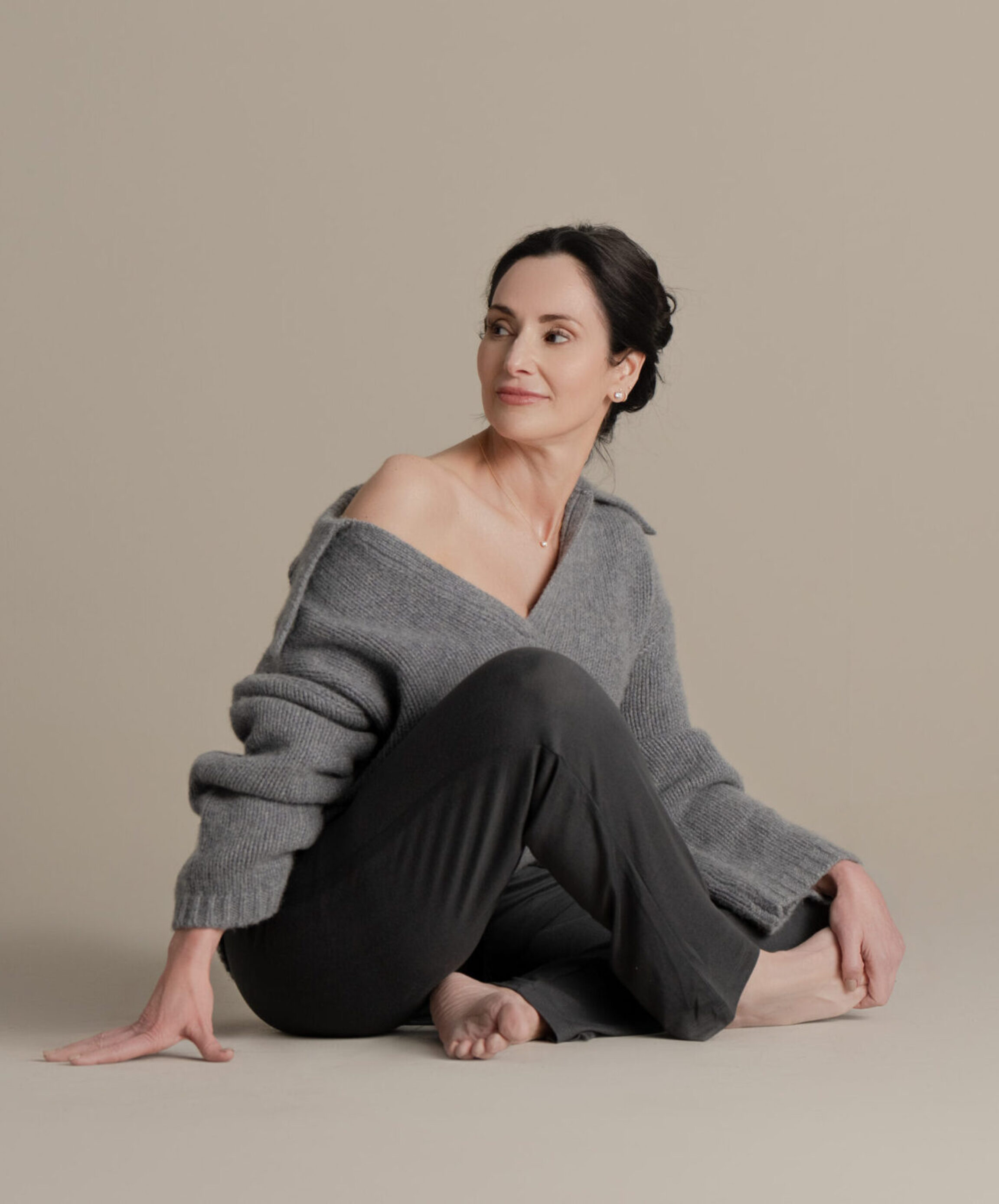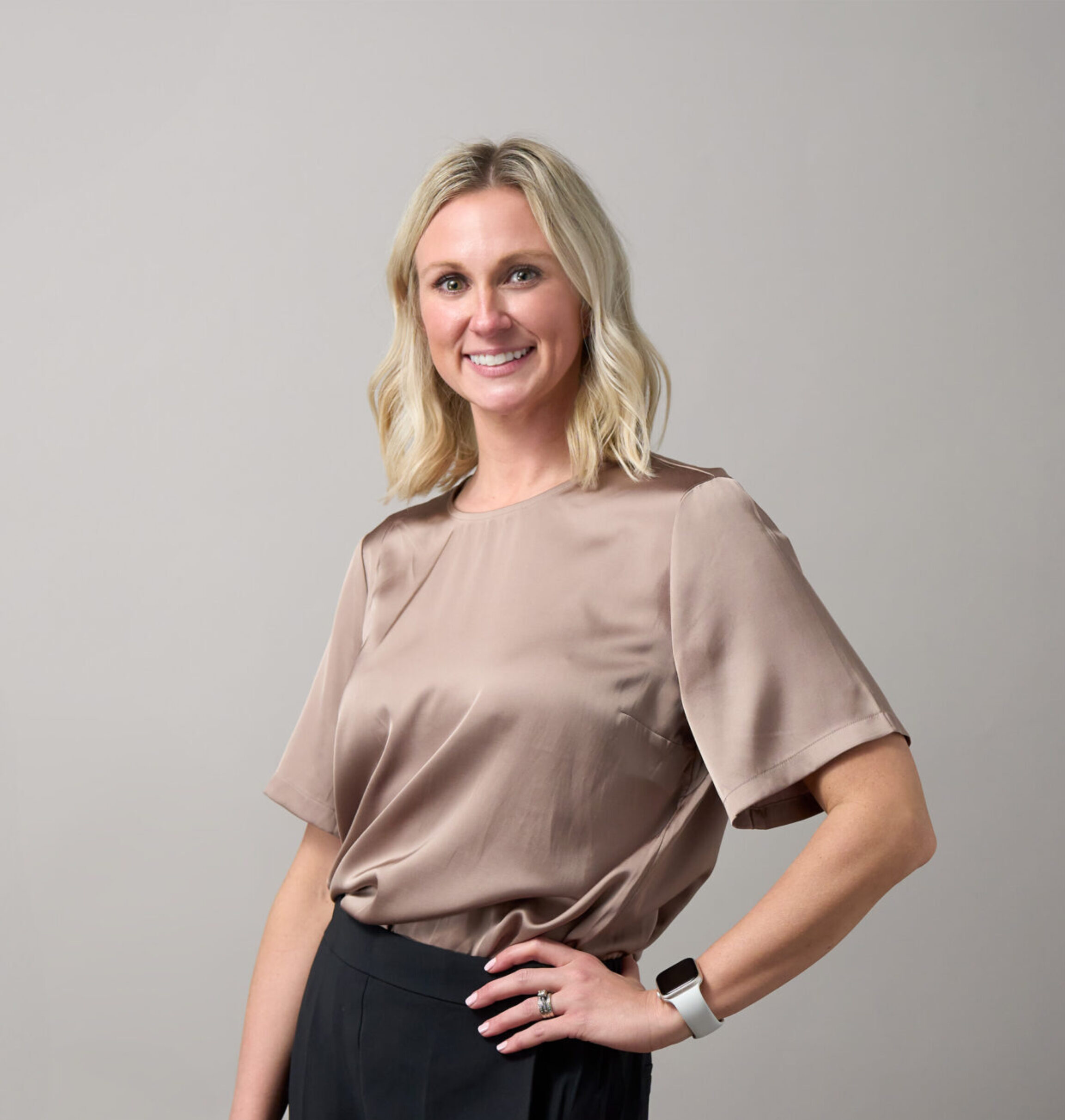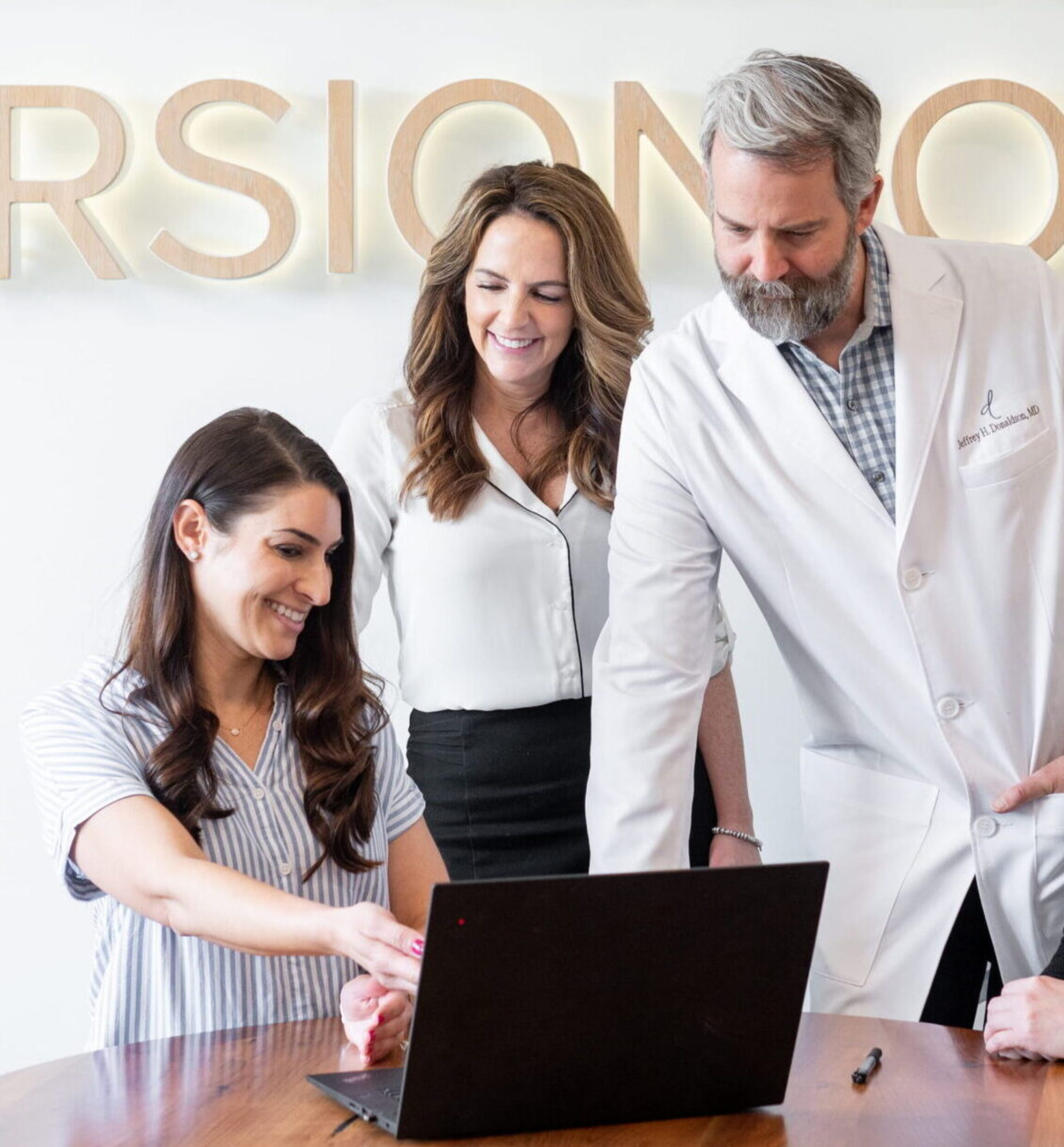Fat Transfer vs. Breast Implants
Explore The Differences Between Two Of The Most Popular Breast Augmentation Procedures
Breast augmentation has always been closely associated with breast implants — but did you know that there is another option for women seeking natural breast enhancement? Fat transfer to the breast is a rising solution that essentially uses liposuction to remove fat from other areas in the body to inject into the breasts. While not as widely popular as traditional implants, fat transfer breast augmentation has plenty of benefits that make it worth exploring.
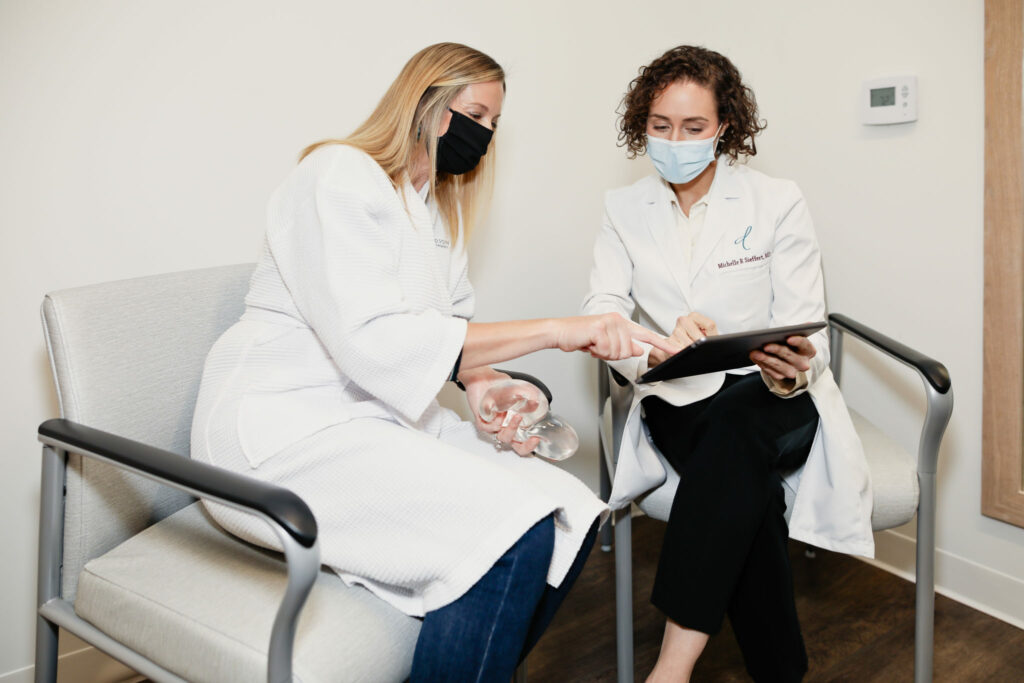
So, why is it that some patients choose to use their own fat over breast implants and vice versa? As your trusted Columbus, OH breast augmentation experts, we’re taking an impartial look at the breast augmentation methods frequently performed here at Donaldson Plastic Surgery.
Fat Transfer: A Closer Look
Fat Transfer is a Natural Option
Proponents of the fat transfer method say that it is a more natural option because it utilizes your body’s own tissue. This is known as autologous fat grafting, or “AFG” for short. AFG to the breasts means there is virtually zero possibility that your body will reject the tissue, but that there is a chance the fat may be reabsorbed. Fat transfer and implant breast augmentations are both safe options, but the AFG method does provide a desirable alternative for those who are uncomfortable with implants. It also means there will be no visible rippling of the implant (uncommon) or risk of experiencing capsular contracture (also uncommon).
The Change is Subtle
Fat transfer to the breast typically results in a very subtle change in breast size. Fat is generally less dense than silicone, meaning it is less effective at building significant volume or altering the shape of the breasts. If you are seeking a natural breast augmentation, the fat transfer may be a good option for you. There is also minimal scarring associated with a fat transfer breast augmentation — a quarter-inch incision is all that is left for the entry point of the liposuction cannula.
What to Know:
The results from fat transfer procedures, in general, can be unreliable because your body has the potential to reabsorb some of the fat during healing. In the weeks after surgery, the fat cells introduced to the area must experience angiogenesis (the formation of new blood cells) in order to last in their new location. Fat cells that do not form a steady blood supply are at risk of being metabolized, meaning symmetry between the breasts is not guaranteed, nor is the retention of all of the fat transferred during your procedure.
Why This Matters: This means that your surgeon could transfer the exact same volume of fat into each breast in the exact same way, but the amount of fat actually retained long-term can potentially differ greatly.
How is a Fat Transfer to the Breast Performed?
Dr. Sieffert performs fat transfer to the breast. To begin, you will be placed under general anesthesia and the surgical site(s) will be numbed with local anesthesia. Your surgeon will create a small incision at the site for the fat to be extracted (usually the abdomen, thigh, or buttocks), and use the liposuction cannula to remove fat from the area. The fat is then purified and prepared to be re-injected into the breasts. A tiny incision will be made either along the fold of the breast or the outside edge for the cannula to be inserted. They will apply more numbing solution, and then the fat will be injected into the breast and dispersed evenly.
Thinking of the breasts’ anatomy in terms of layers (or “planes”), the inner-most layer is the chest wall, followed by pectoral muscles, adipose tissue, and then the functional mammary glands and ducts of the breast. When the fat is transferred to the breast, it is typically placed in the sub-glandular plane, meaning it is placed behind the glands where most of the fat already resides. Your surgeon will then suture the small incision site closed.
What They’re Saying:
Reports from plastic surgery’s leading authority, the American Society of Plastic Surgeons (ASPS), confirms what we already know — that fat transfer breast augmentations only provide a relatively small increase in size. It is recommended primarily for individuals who prefer natural results and wish to see a subtle increase in breast size.
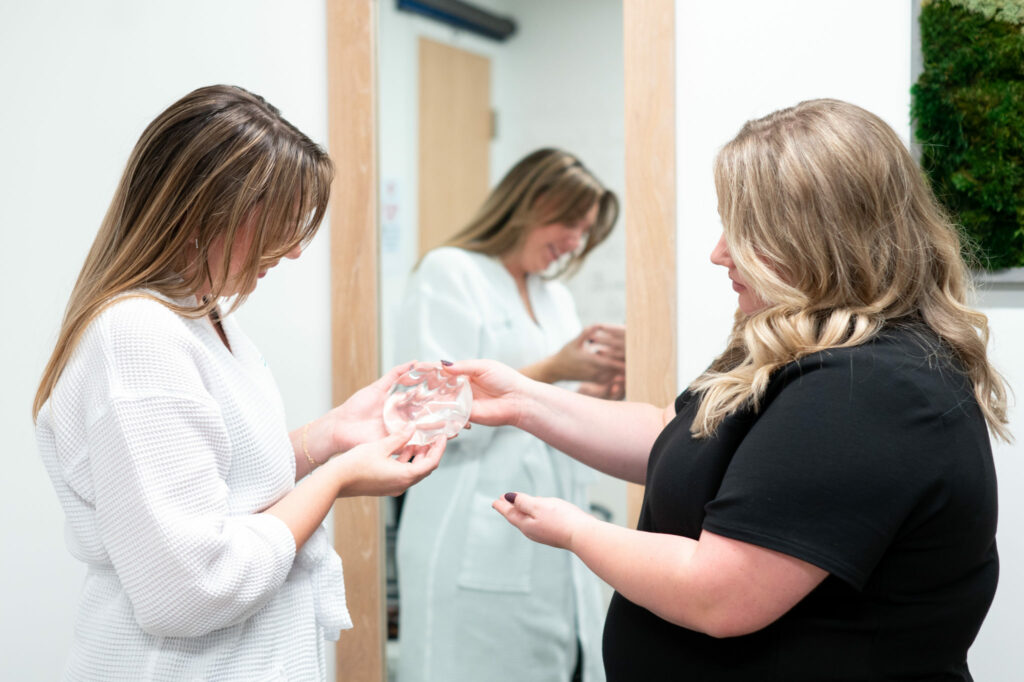
Breast Implants: In Greater Detail
About Breast Implants
Soft silicone gel implants are now an industry standard for breast augmentation surgeons across the world. During implant selection, different projections, profiles, sizes, and cohesivity can be combined for a unique implant that is tailored to your body and personal preferences.
Consistency Matters
Not only do we mean that breast implants offer long-term dependability, but the actual consistency of the silicone gel matters, as well. This is known as the cohesivity of the implant. Depending on how cohesive the implants are, you can achieve an incredibly natural enhancement or a firmer, more augmented look. Ultimately, you have more control over the shape, size, and overall look of the breasts than you would with a fat transfer.
How is it Performed?
Both Dr. Donaldson and Dr. Sieffert perform breast augmentation using silicone implants. Once you are comfortably resting under general anesthesia, your surgeon will numb the area and carefully make an incision along the outside edge of the areola or underneath the natural fold of the breast. He or she will create a pocket beneath the breast tissue and muscular wall within which to place the implant. Remember those layers of the breast we talked about earlier?
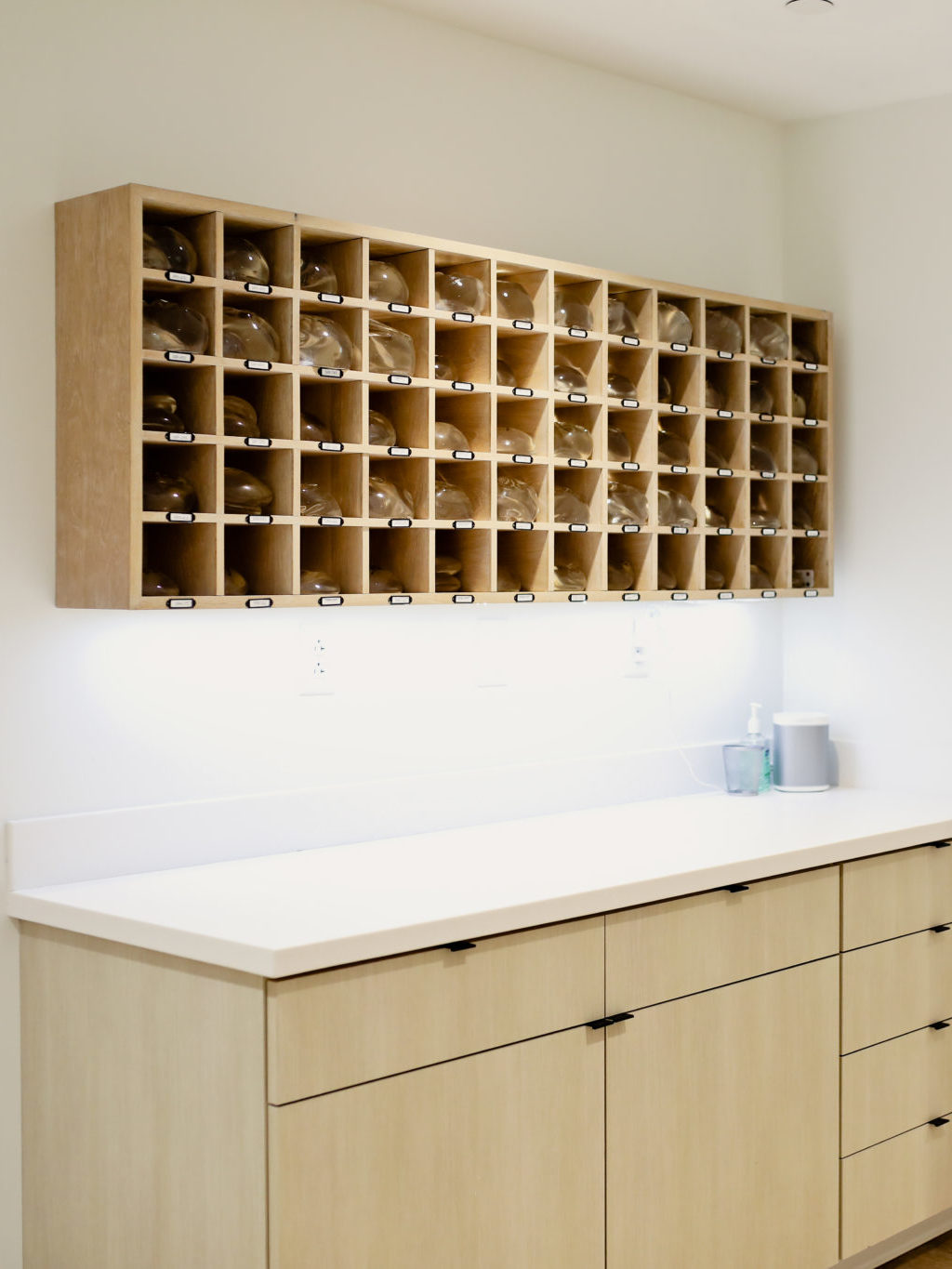
Breast implants are usually placed under both the muscle and breast tissue using a dual-plane approach. In a Dual-Plane style breast augmentation, the upper part of the implant is placed under the muscle (which prevents rippling or implant visibility) and the lower part of the implant sits behind your natural breast tissue. Once the implant is placed, your surgeon will close up and place sutures along the incision site.
By the Numbers
For decades, breast implants have reigned as the most popular option among augmentation patients and plastic surgeons alike. According to the ASPS’ 2020 Plastic Surgery Statistics Report, 84% of total 2020 breast augmentations reported used silicone implants. Closer to home, about 90% of breast augmentation patients in our practice opt for breast implants over fat transfer to the breast.
Did You Know?
Donaldson Plastic Surgery is home to the largest collection of breast implant sizers in the tristate area. Check out our famed breast implant display wall!
Which Method Should You Choose?
Your surgeon may have a recommendation for your unique frame, or one option may be better suited for your goals than the other. However, like all of the decisions you make for your body, the choice between breast implants or a fat transfer is completely yours to make. As board-certified plastic surgeons, it is our job to educate you about your options and help you to make an educated decision. We will certainly guide you, but at the end of the day, we empower our patients to make the final decision for themselves.
We strongly recommend that you choose a board-certified plastic surgeon well-versed with breast augmentation surgery and experience performing both methods. It is important that you do your research on your surgeon’s credentials and technique.
Main Takeaway: There are many choices involved with breast augmentation, but the first and most important decision you’ll make is to select a board-certified plastic surgeon.
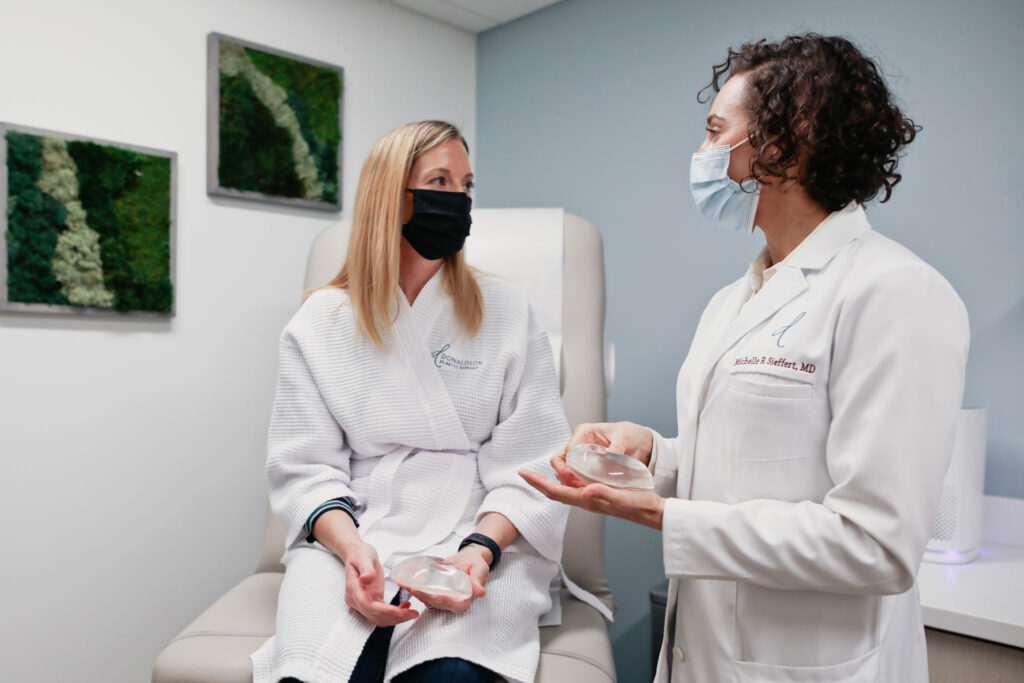
Still Researching Your Options? We Can Help!
We know that the choice to receive a breast augmentation is a big decision. The research stage is important for anyone looking into a breast augmentation, and a consultation with our team can be a great way to expand your research in a fun, pressure-free way. Even if you’re not ready for surgery, you’ll leave your consultation with more information, a general surgical treatment plan, and even a customized quote for your breast augmentation. You may even have additional questions you didn’t think of before — we’re here to answer those, too!
Ready to take the next step in your research? Our friendly patient communications team will reach out to you with more information about a breast augmentation, answer any questions you may have about the process, and help you set up a consultation. We can’t wait to help you feel like your very best version of you!
Check out some of our other helpful breast augmentation resources:
- Breast Augmentation Slideshow
- Breast Augmentation Patient Testimonials
- How to Choose the Right Breast Implants For You
- What is a Dual-Plane Breast Augmentation? by Dr. Donaldson
- Breast Augmentation Incisions
- Breast Augmentation Implants
- Breast Augmentation Position
- Dr. Donaldson Explains Scarless Breast Augmentation
- Answers About Fat Transfer
- Can You Breastfeed After Breast Augmentation?
- Does Breast Augmentation Hurt?
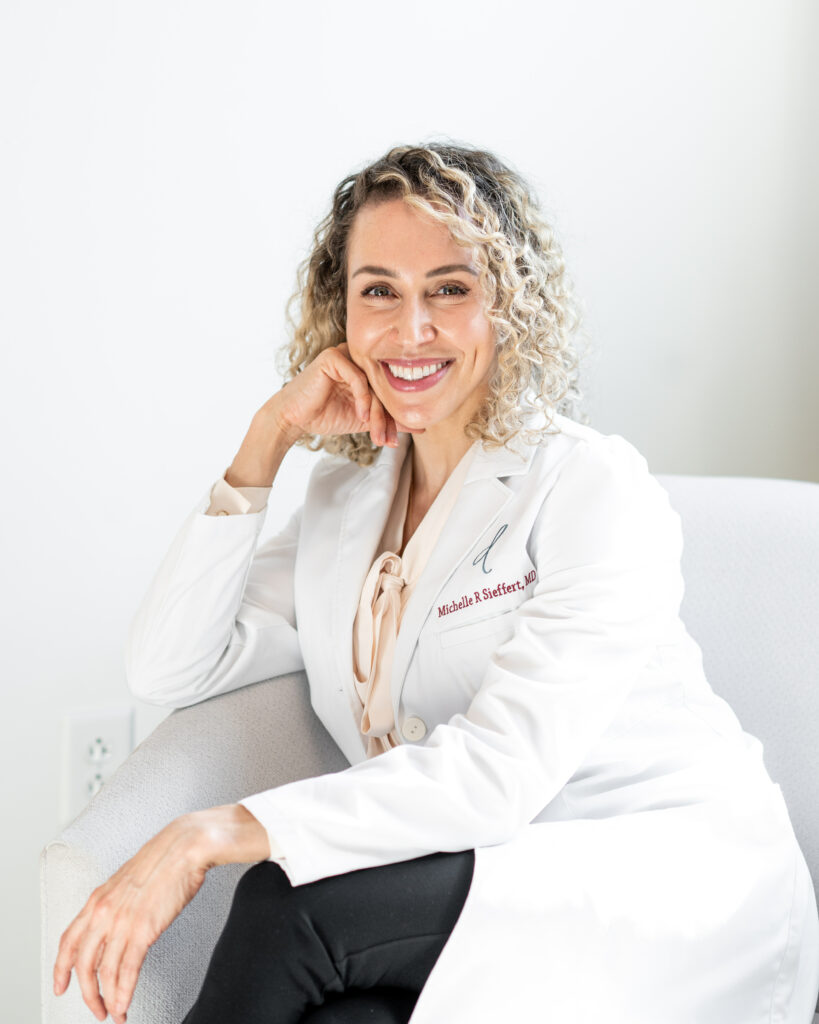
About The Author
As a board-certified plastic surgeon, Dr. Michelle Sieffert specializes in helping patients choose the best surgical route forward based on their specific anatomy and cosmetic goals. She has performed hundreds of successful breast augmentation surgeries throughout her tenure using both the fat transfer method and breast implants.
Related Articles

Read More 11 Breast Augmentation Recovery Tips
11 Breast Augmentation Recovery Tips
Dr. Donaldson & Dr. Sieffert share the most essential breast augmentation recovery tips to make your downtime as quick & easy as possible







